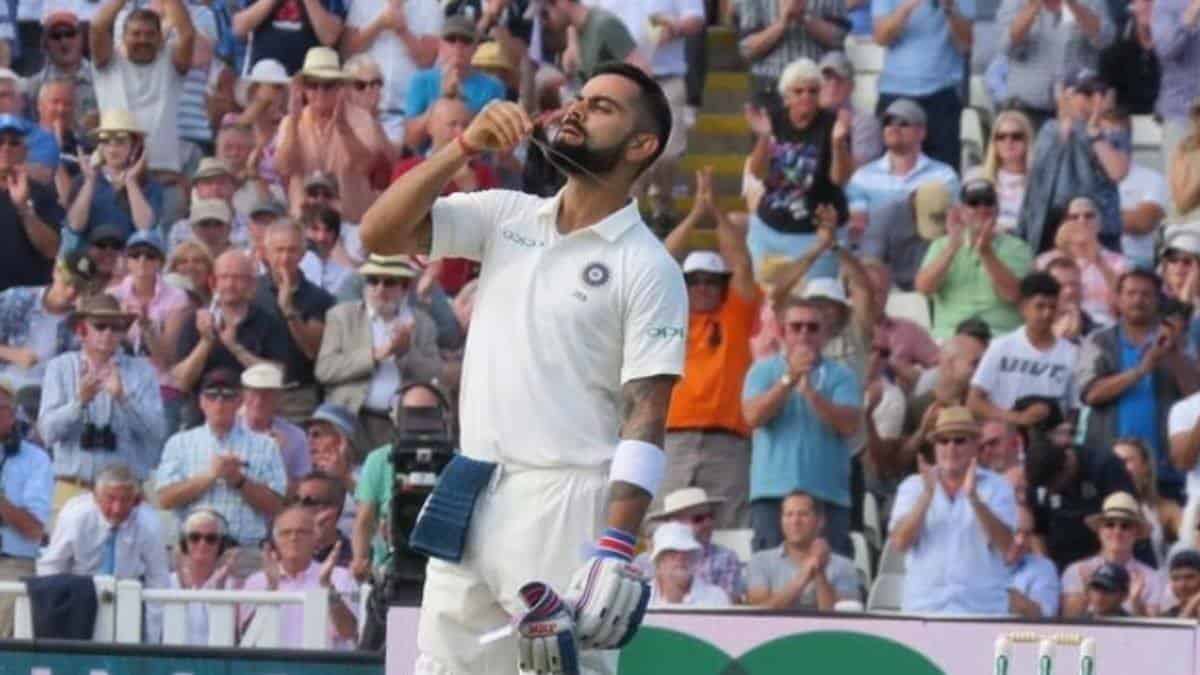Despite challenging circumstances, Kohli shows unwavering discipline

Virat Kohli averaged 13.40 during India’s tour of England in 2014. He returned to England four years later and topped the series aggregates with 593 runs, including two hundreds, at 59.30.
This transformation in fortunes has become neat and elegant as TV analysis has become concise and succinct. When the 2014 Kohli left the ball nervously outside off stump, the 2018 Kohli did so with great judiciousness.
It was more complicated than that, as it often is. As any batsman must to score so many runs anywhere, let alone against an attack led by James Anderson in England, Kohli batted well in 2018, but he did not necessarily become a monk outside off stump. Along with all the other factors that played into that series, luck also played a role.
According to ESPNcricinfo, Kohli’s wickets were lost 10 times to 54 false shots in 2014. During the same period in 2018, he played 200 false shots. Off stump, uncertainty may have been less, but by no means had it been eliminated. Despite the fact that he played at balls he should have left alone, he played and missed more often than he edged them.
However, Kohli played an innings in Cape Town on Tuesday that matched his narrative of unwavering discipline outside off stump.
ESPNcricinfo data shows that over the last five years, batters have faced 100 or more balls from fast bowlers which ended up outside off stump in 143 Test innings. Kohli’s innings at Newlands featured the highest leave percentage against this sort of delivery: 57.4%.
As a result, Kohli relegated such paragons of self-denial as Tom Latham, perhaps the best leaver of length in the world, and Azhar Ali to second and third place, respectively, and the new-and-improved KL Rahul to fourth place.
It was Kohli’s first innings since the first Test in Centurion, where he twice attempted extravagant drives against balls wide of the off stump.
The cover drive wasn’t shelved entirely by Kohli in Cape Town, but was put on hold until the ball was pitched full enough to make the shot safe. While the highlights of his 79 will include pristinely timed drives through cover and mid-off, those highlights are unlikely to include the highlight of his inning: the long gaps between those drives.
However, decision-making is only one aspect of shot selection. Kohli didn’t play loose drives in Centurion while fully aware of the line and length of the balls. The voice in his mind did not say: “11th stump, not quite a half-volley, but I’ll go for it anyway.”
In addition to shot selection, there is another aspect: judgment. A batter has a fraction of a second to judge the line and length of a ball and react to it. This is mostly a subconscious process.
There are times, of course, when batters make better judgements more consistently than others, and much of this has to do with the position they are in when the ball leaves the bowler’s hand.
In most cases, when things go wrong, it is just a matter of inches where the feet and head are located. Small spatial margins may depend on minute changes in trigger timing.
A typical trigger movement for Kohli is a back-and-across step, followed by a small step forward and across, with the front foot landing lightly so it can still be unweighted for subsequent adjustments based on the ball’s line and length.
Kohli seemed to make these movements just at the right time throughout his innings on Tuesday. Various experts, including Sunil Gavaskar in the commentary box, noted that his front foot moved smoothly forward without crossing too much to the off side. The result was two positive outcomes. The first is that Kohli would often get into positions where balls wider than the sixth stump were too far outside his eyeline and too far away to be manipulated.
In the recent past, Kohli has often been the victim of bad luck. He had a good day on Tuesday. Rabada found Kohli’s edge without the ball going to hand multiple times during that ferocious spell during which he dismissed Rahane. Furthermore, there was a top-edged hook that crossed the boundary.
All of this was not a surprise to those who have followed him closely. Even after this innings, Kohli is still averaging only 28.11 since the start of 2020, but that is less due to Kohli’s batting effort than to the difficulty of the conditions he has encountered. The 74 in Adelaide, 72 in Chennai, and 44 in Southampton have all represented exemplary technical proficiency in demanding circumstances during this stretch of superficially lean play.
Unlike those innings, this one ended well short of three figures, but that shouldn’t matter. Excellence is excellence.


